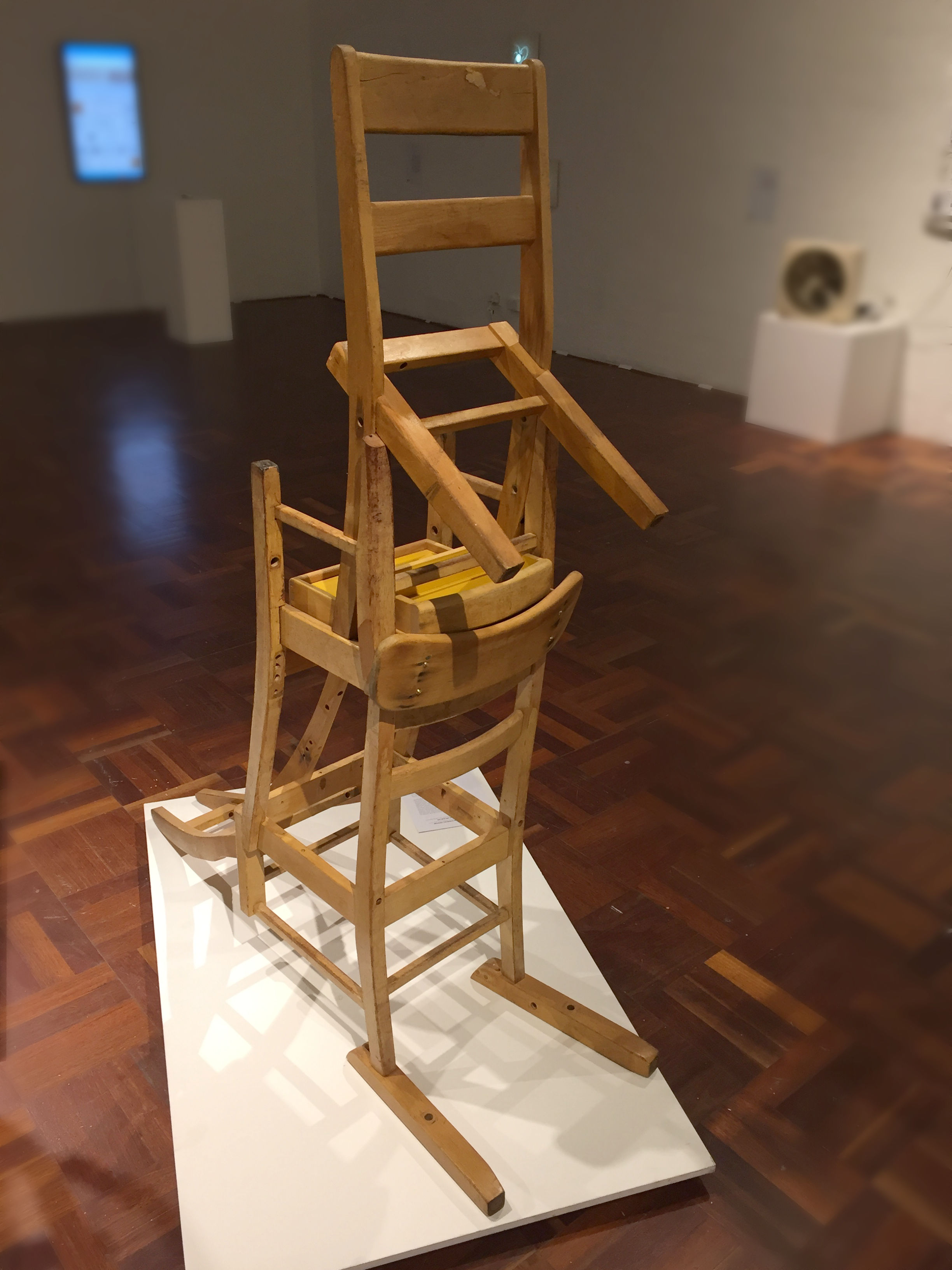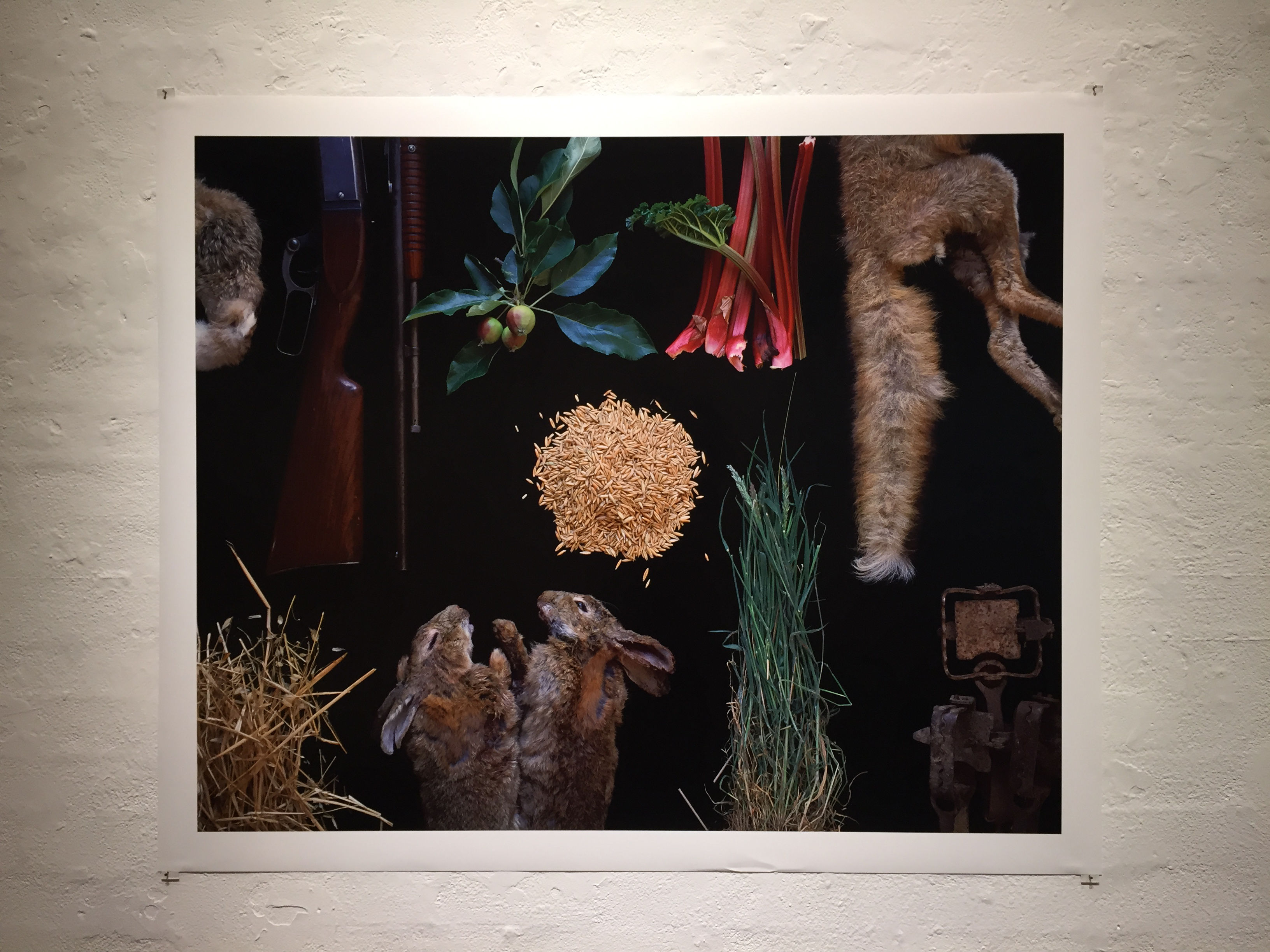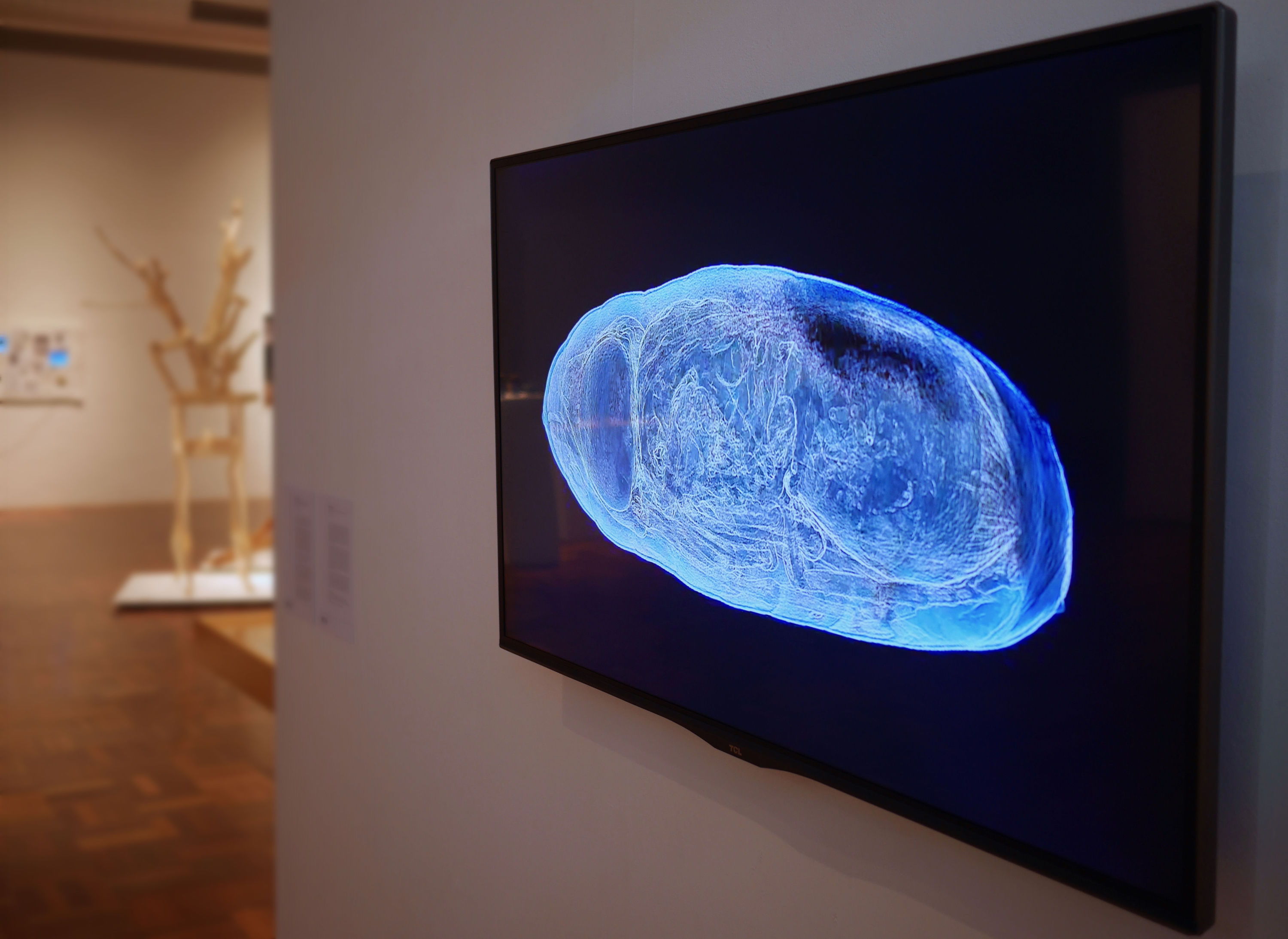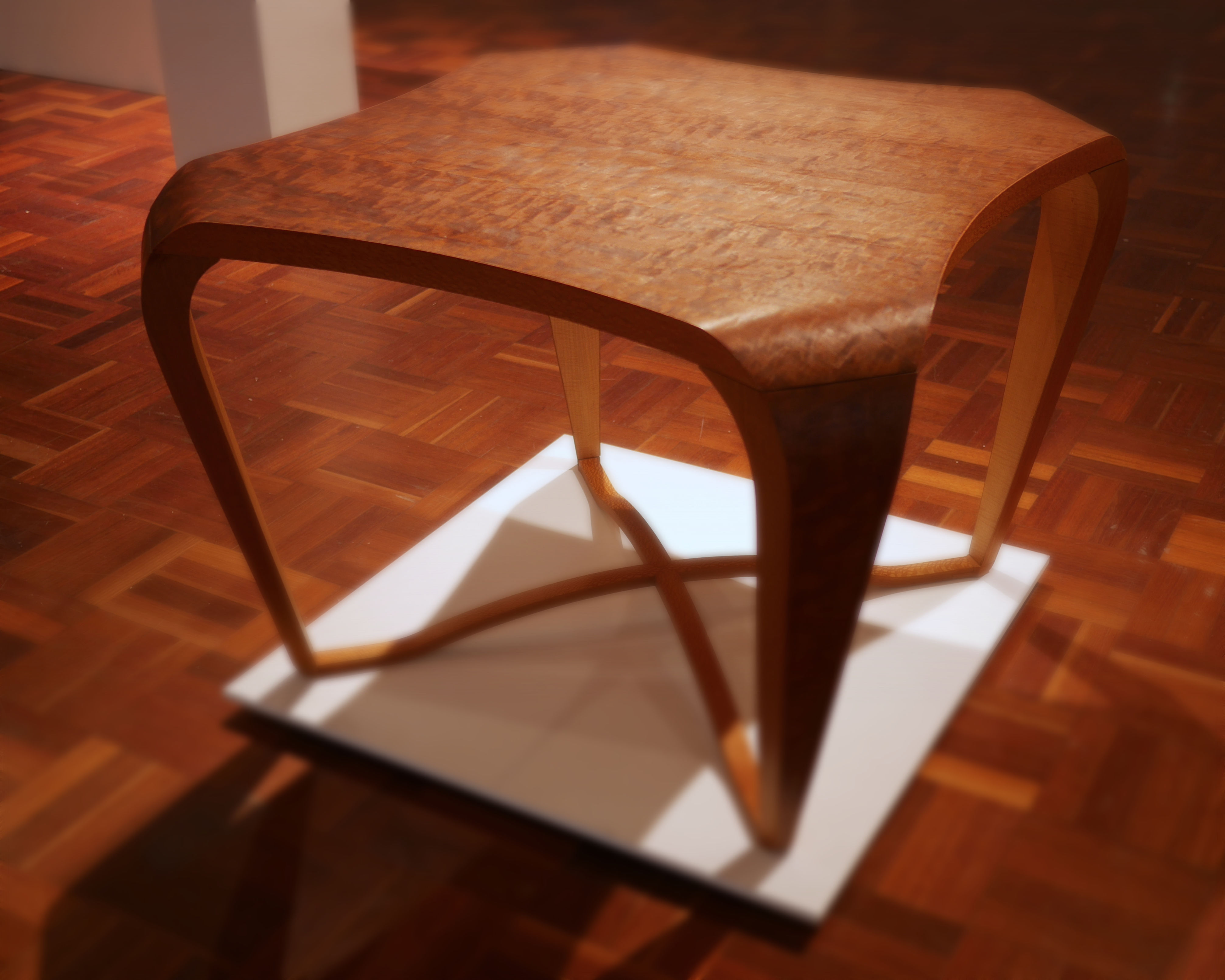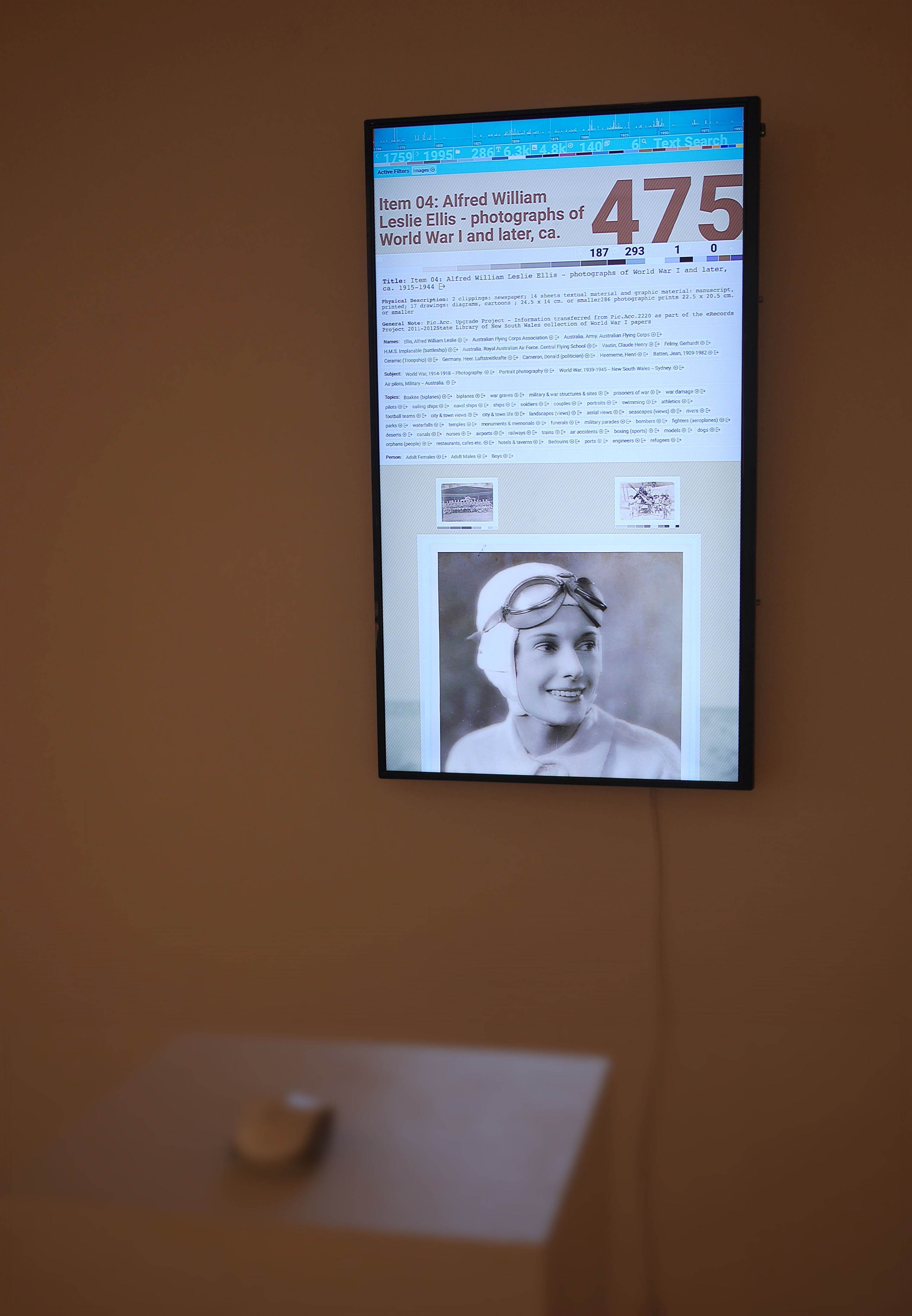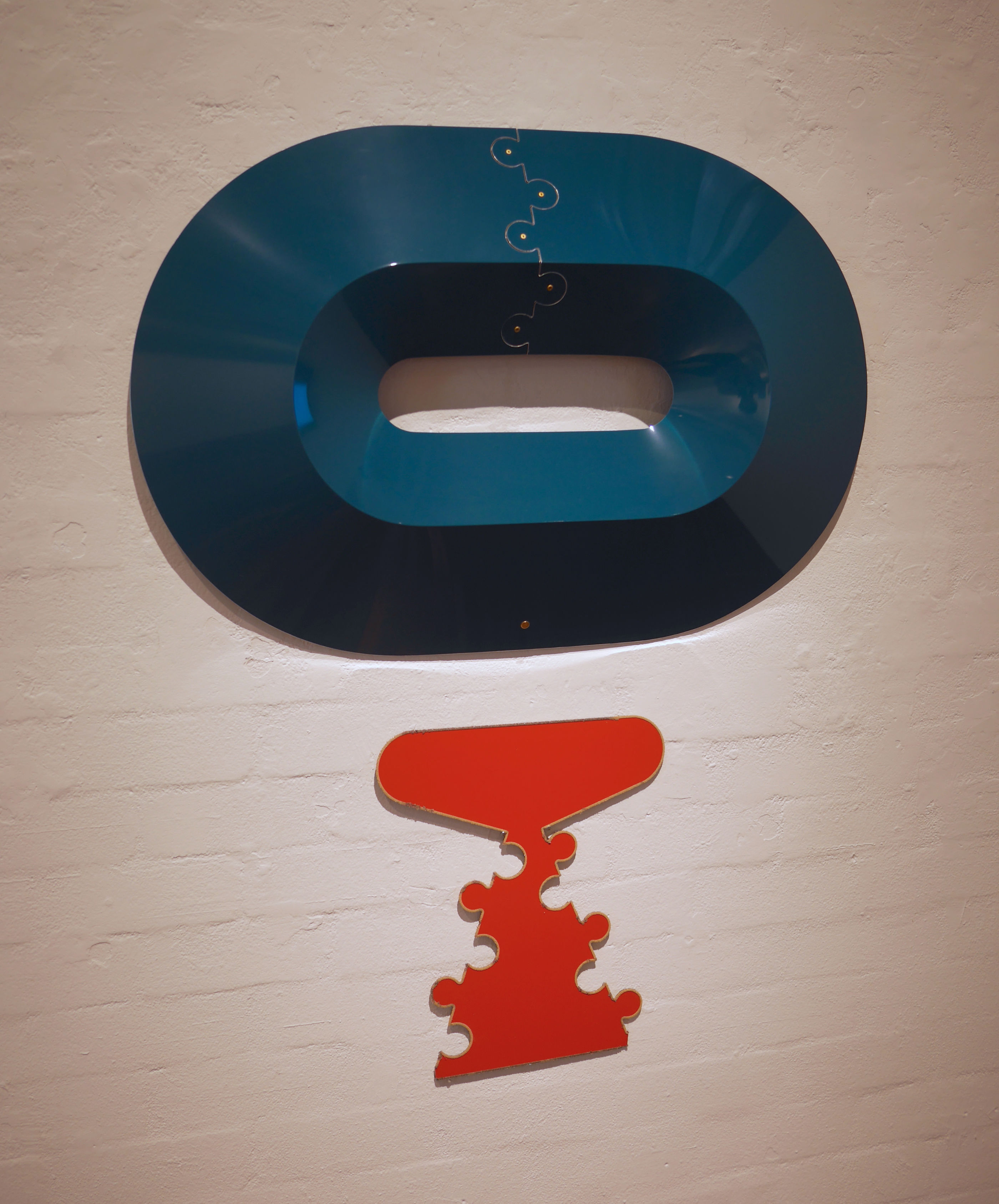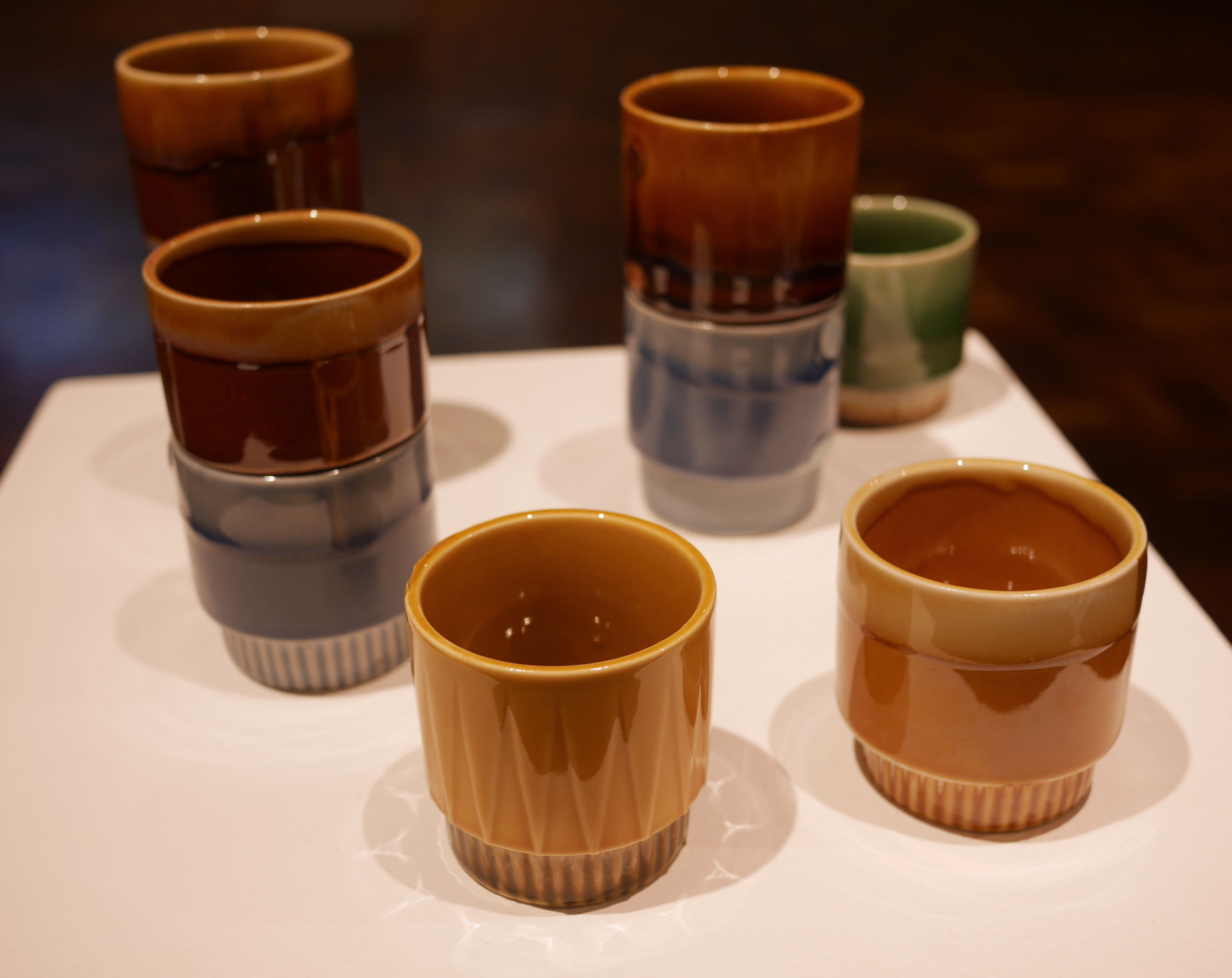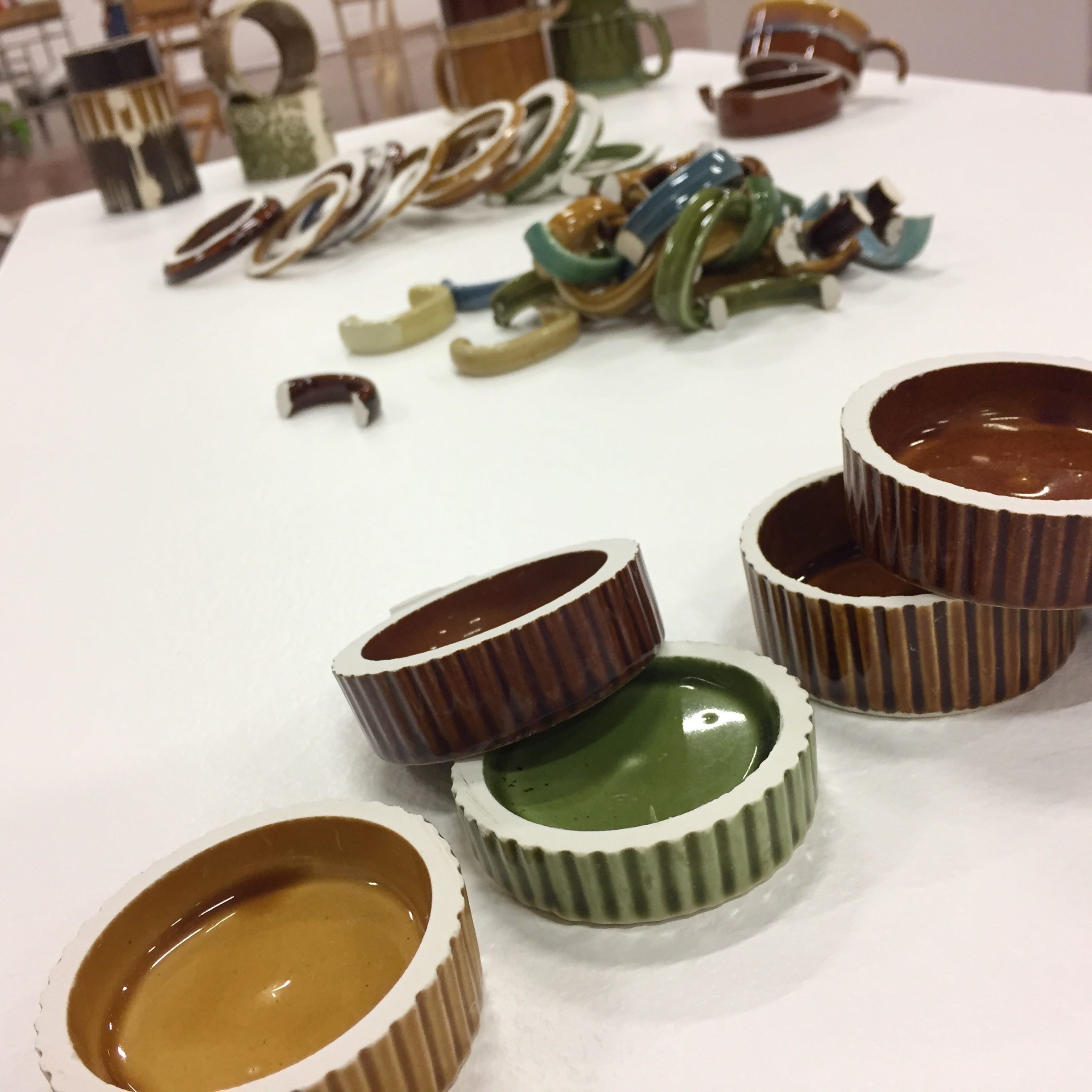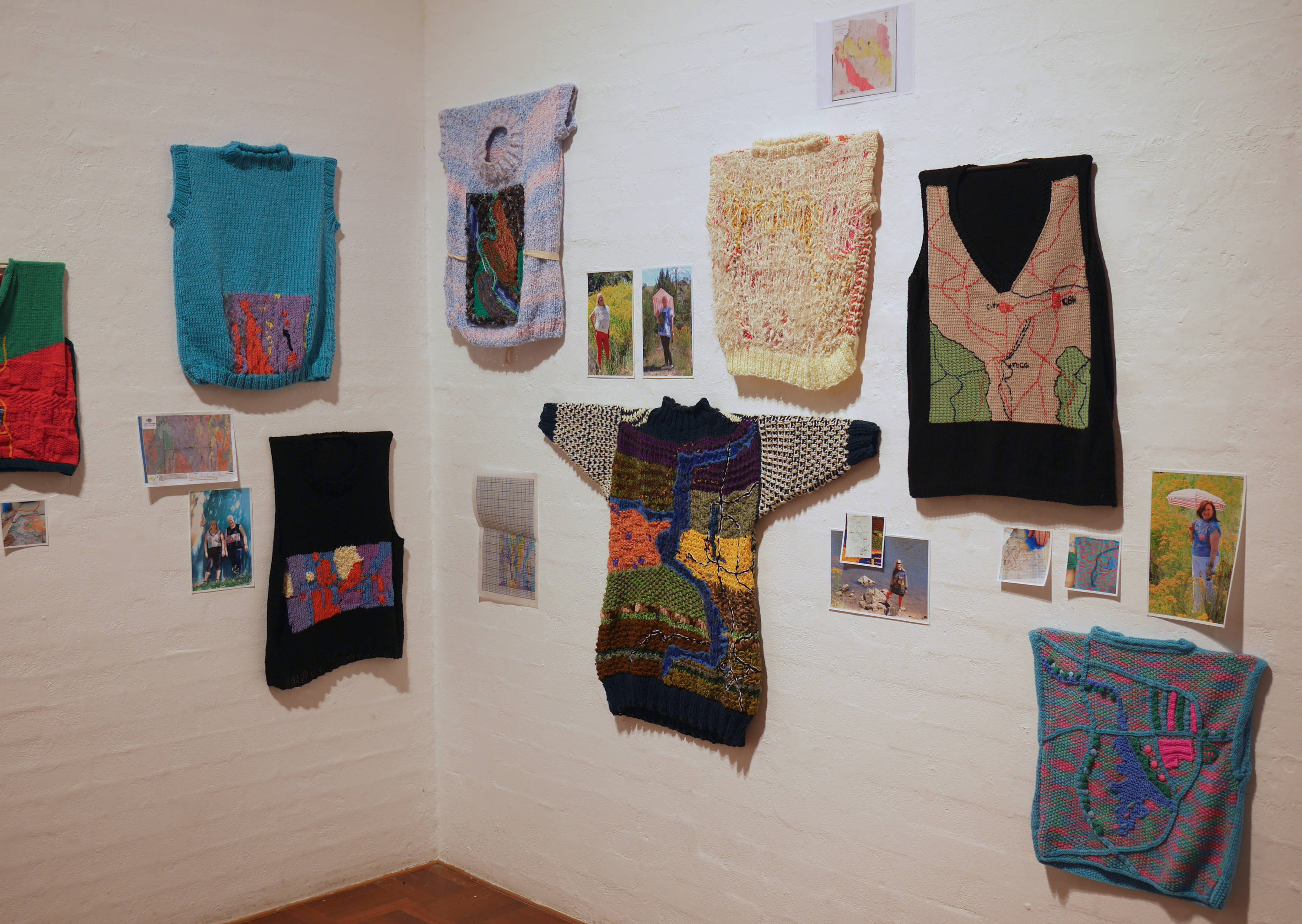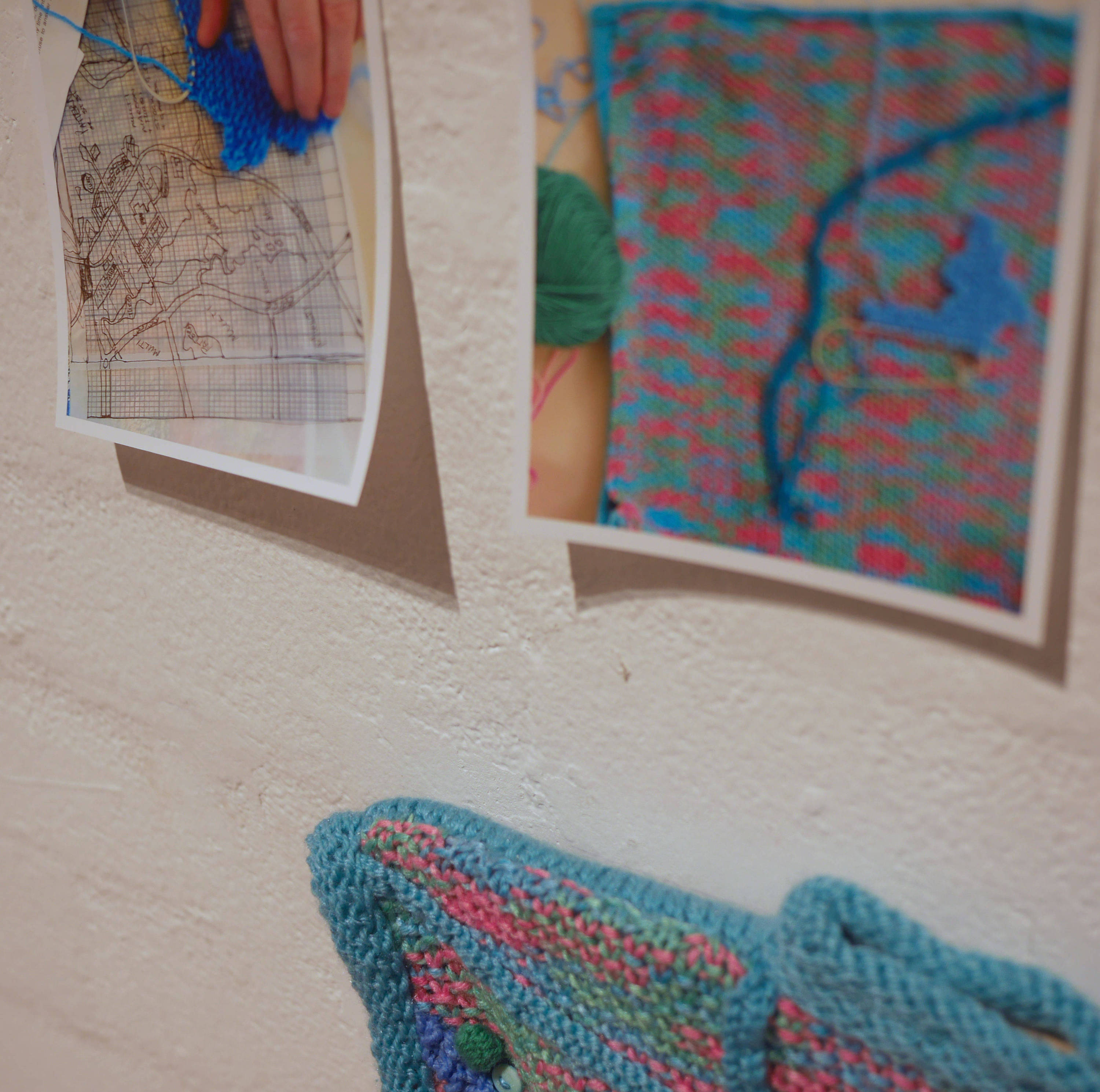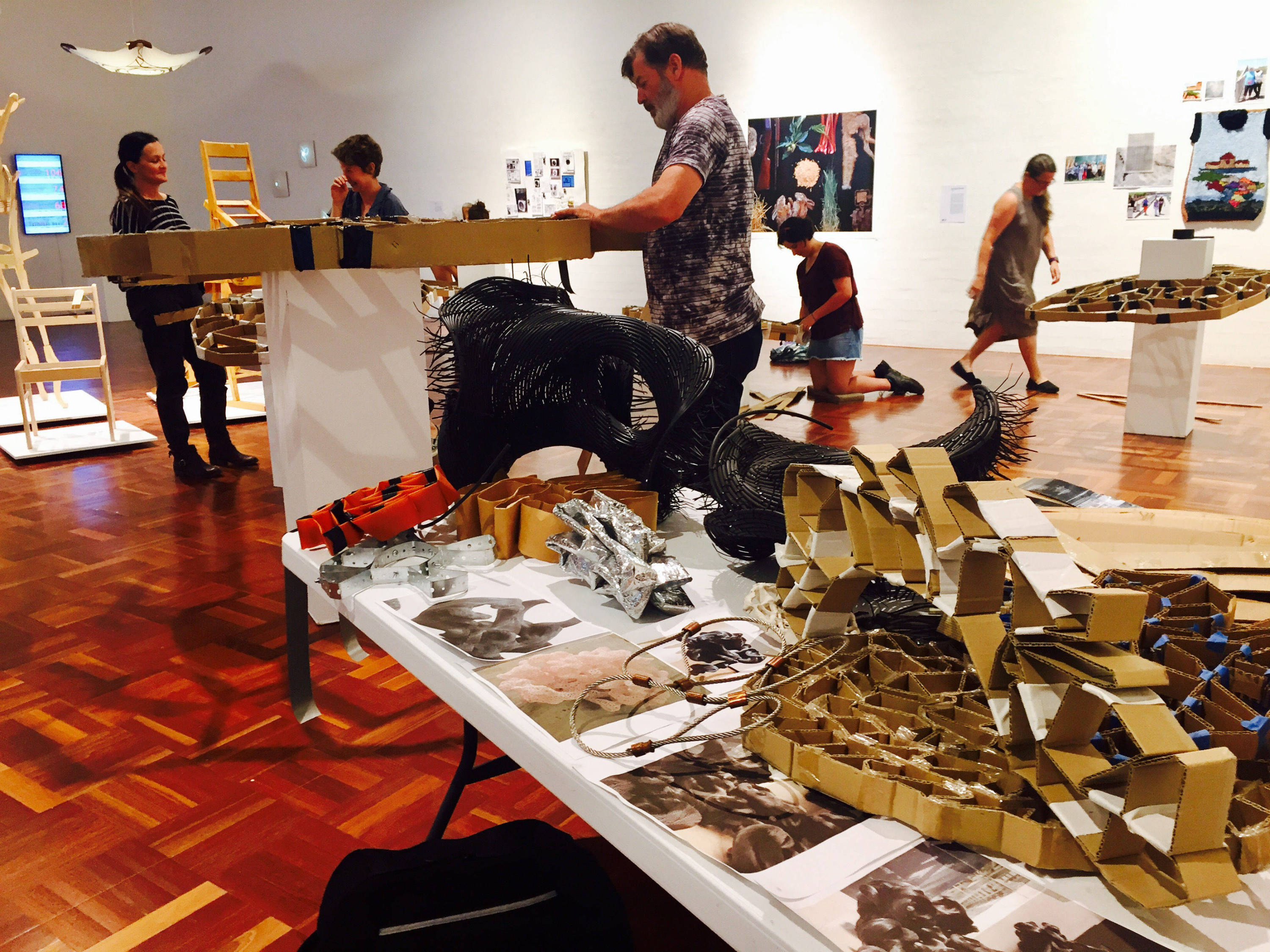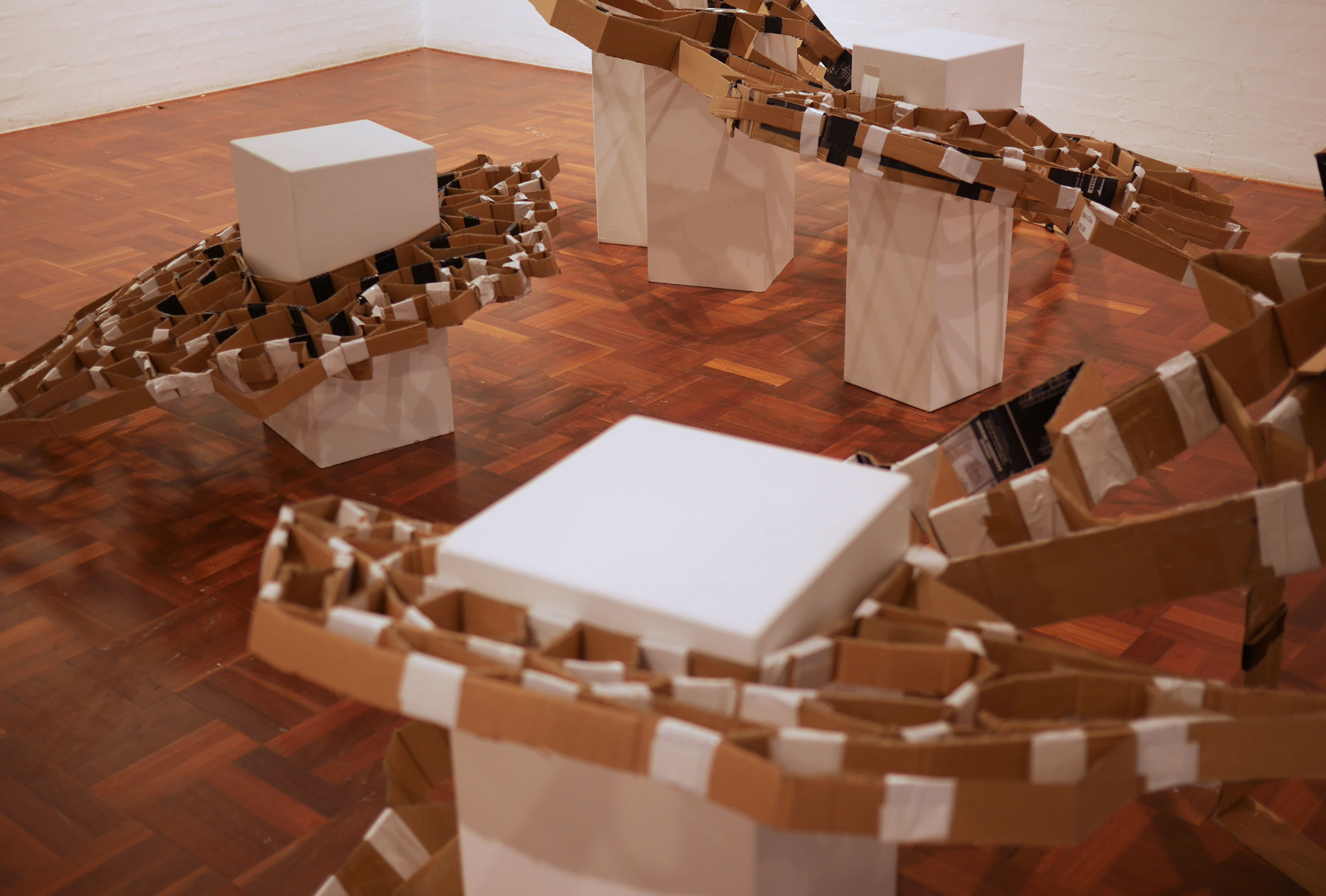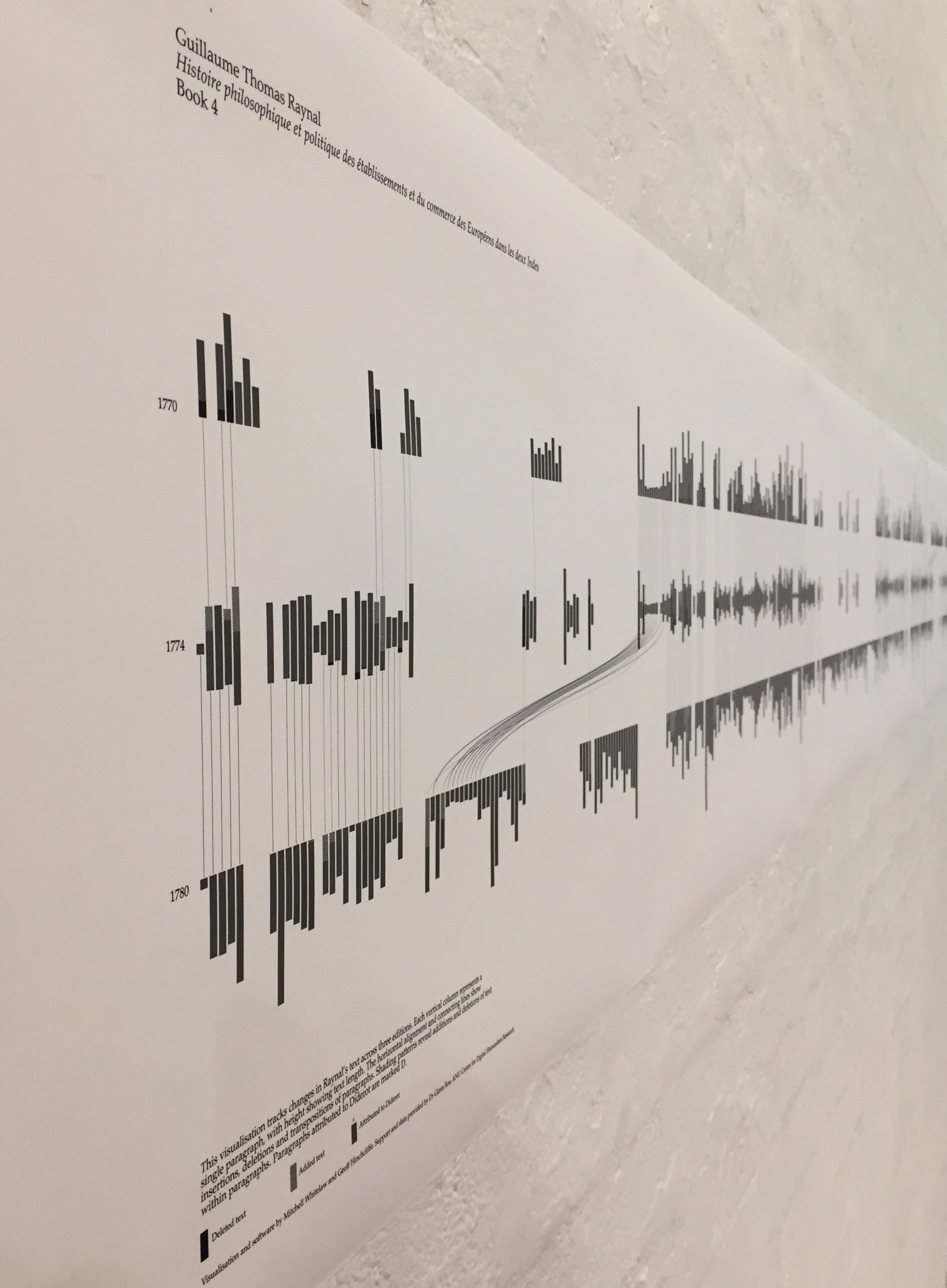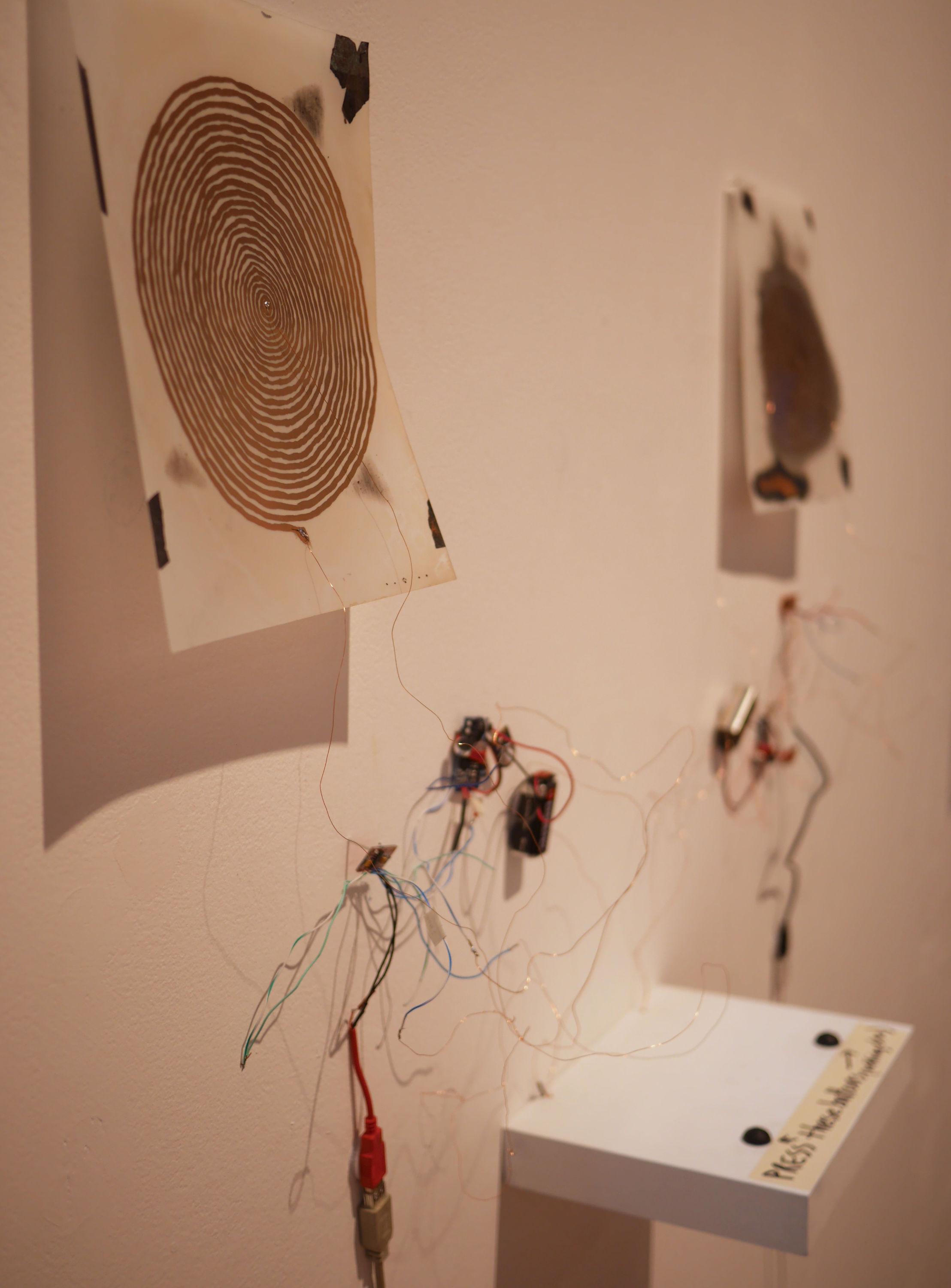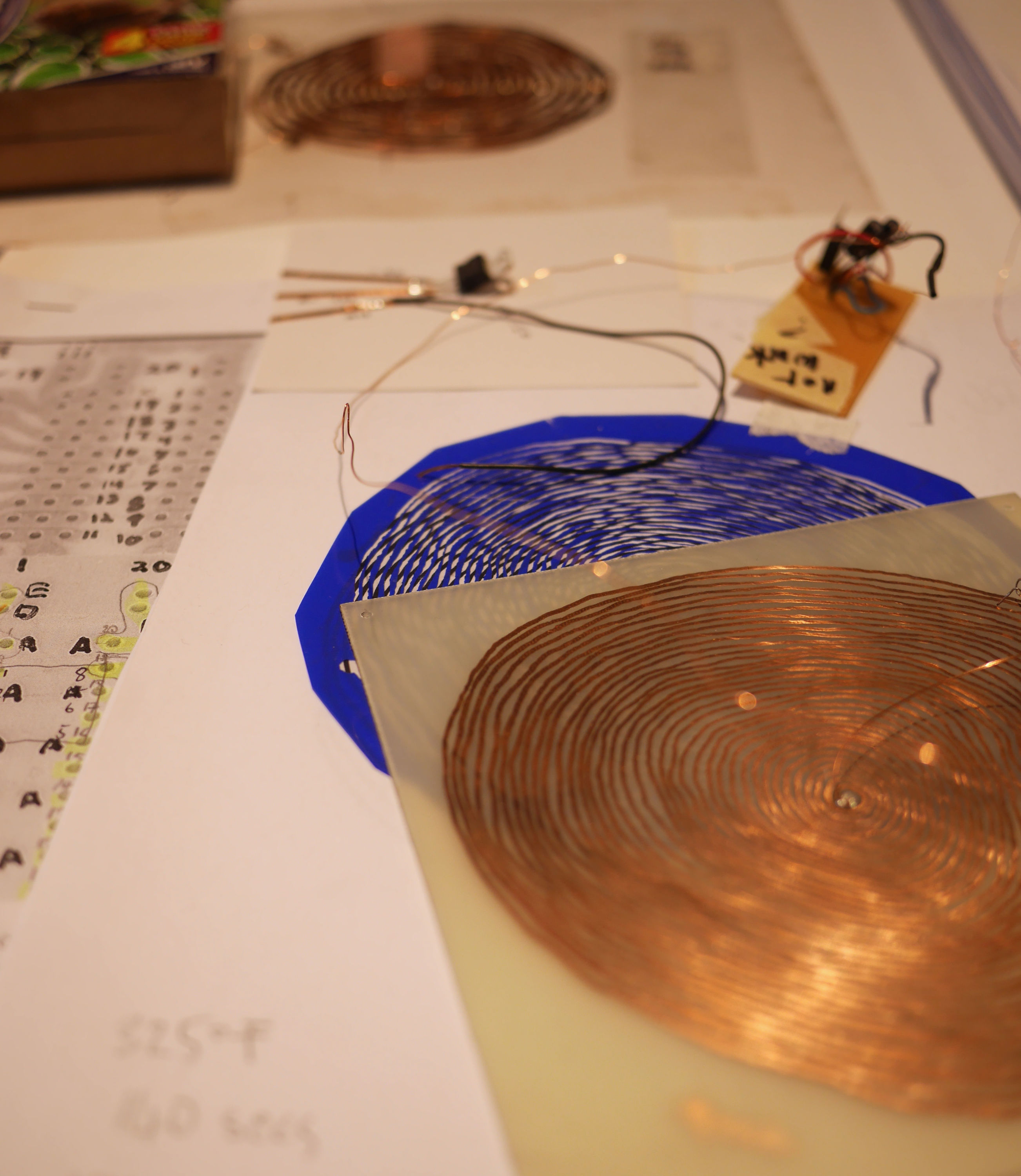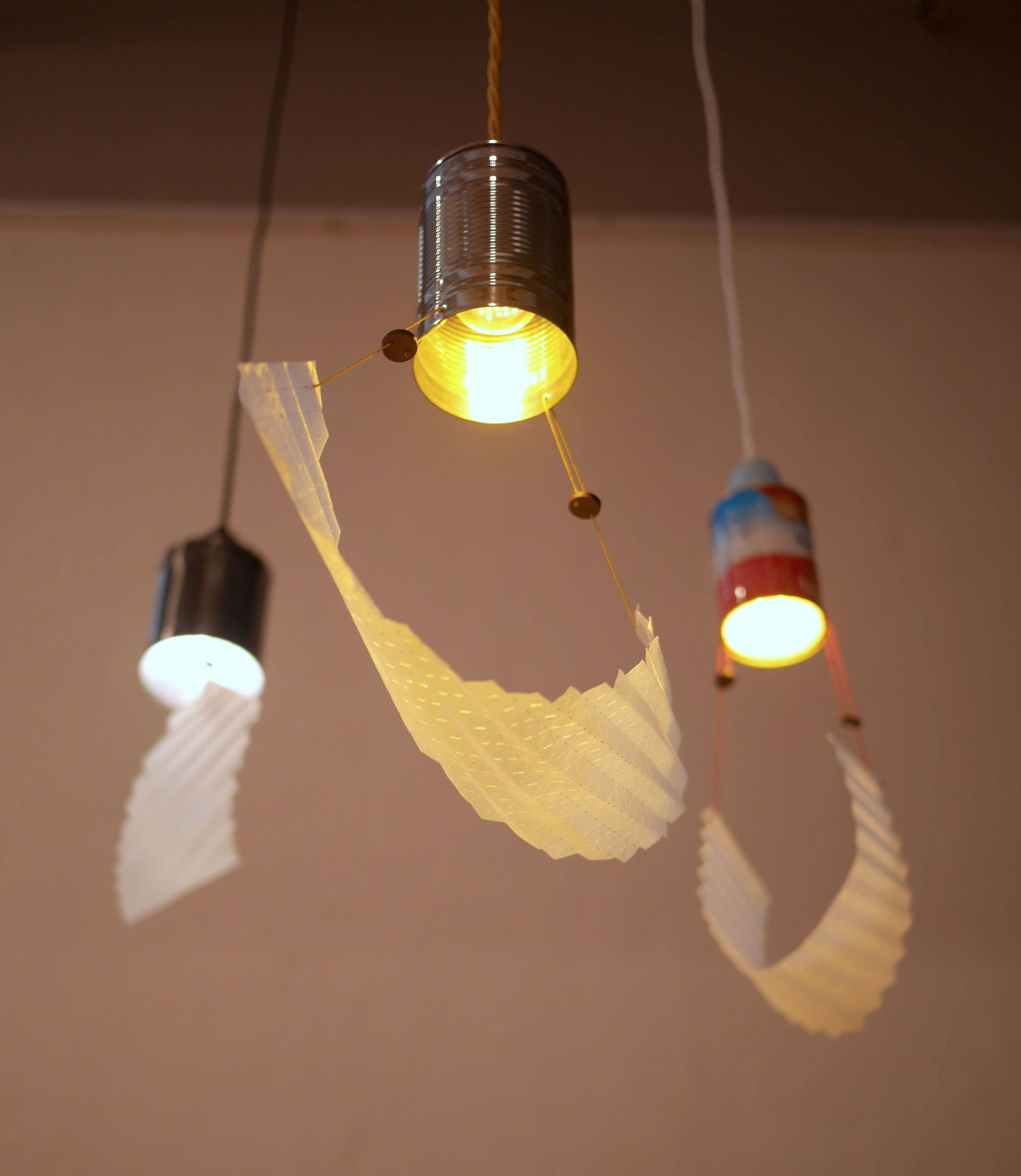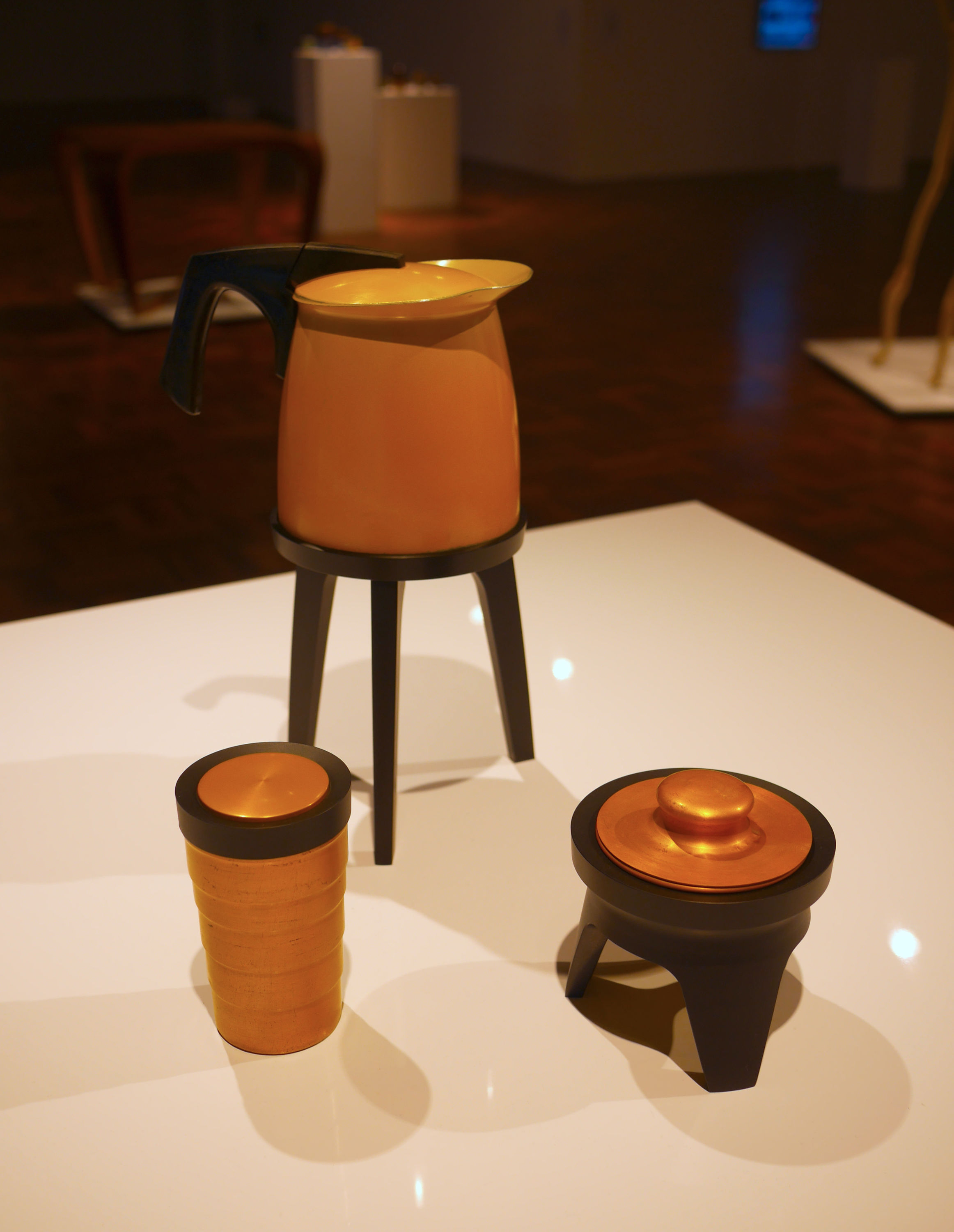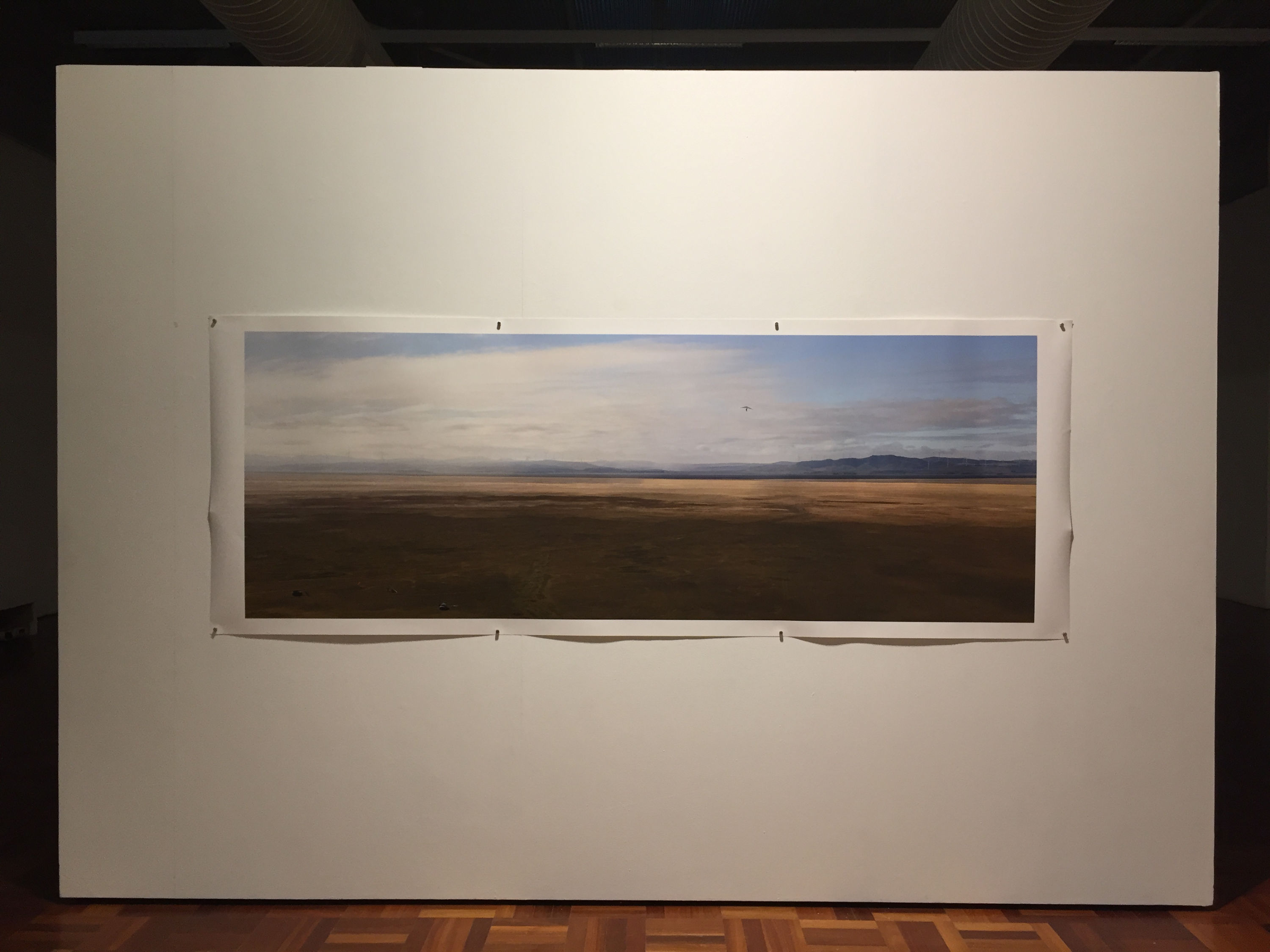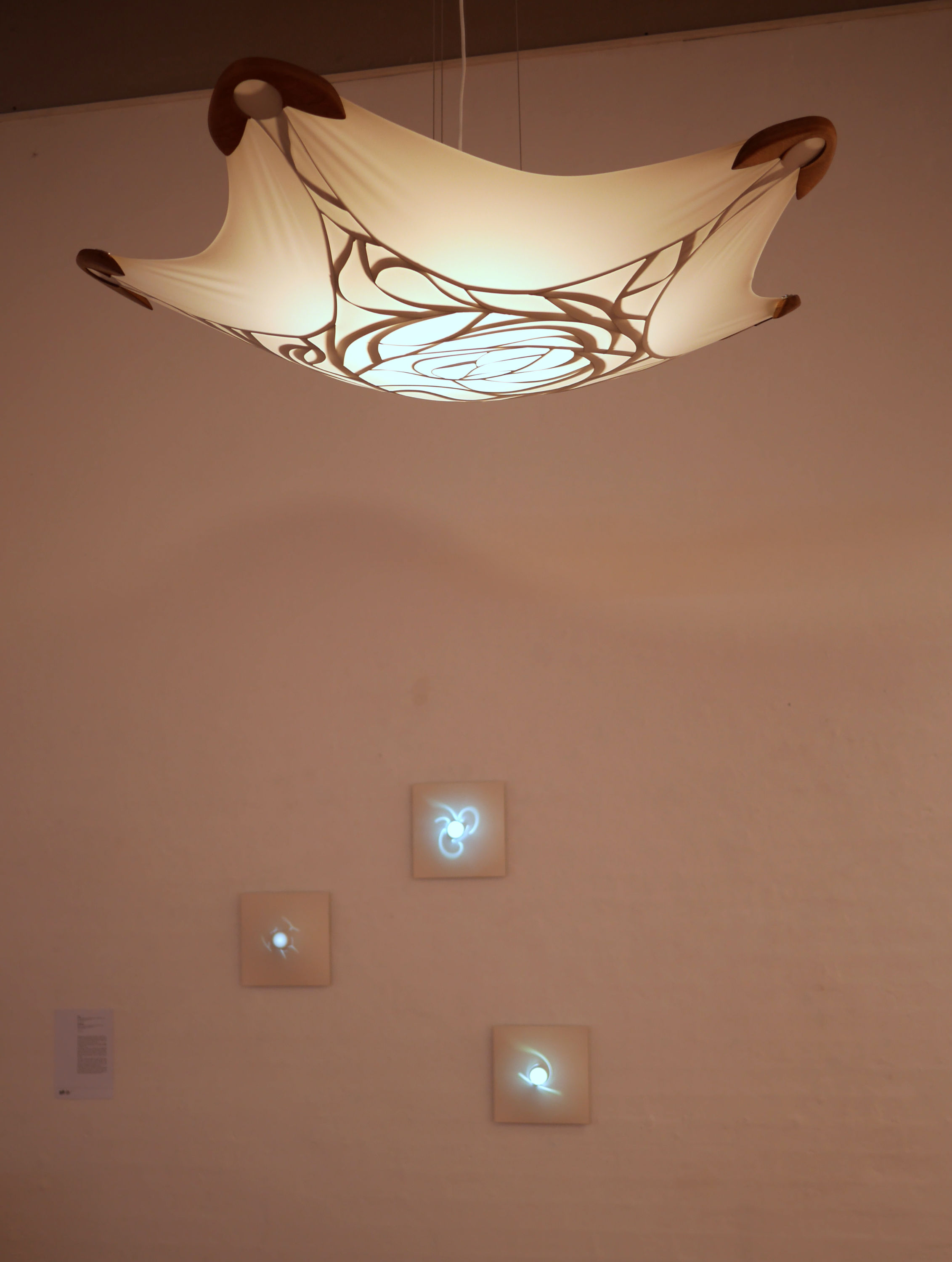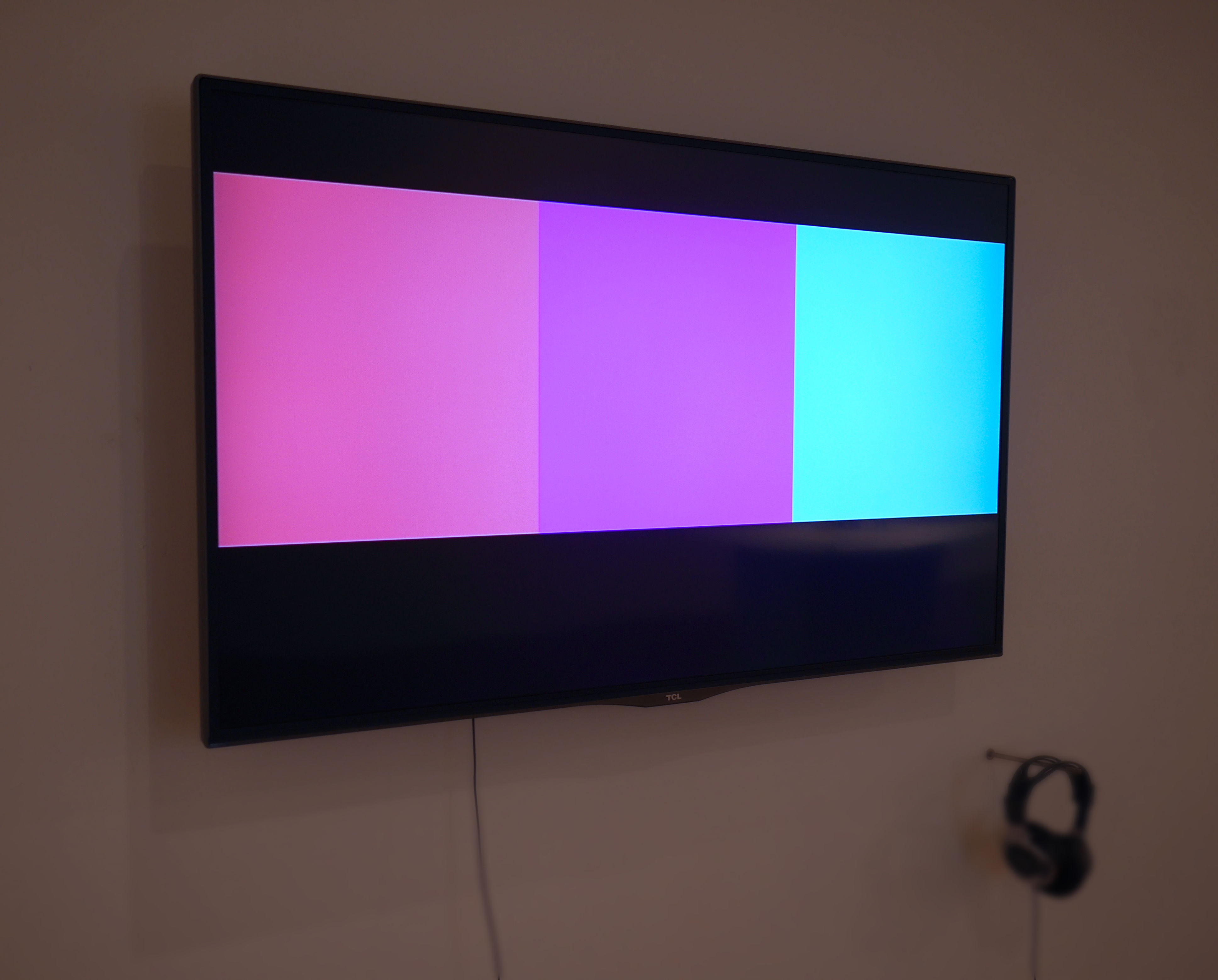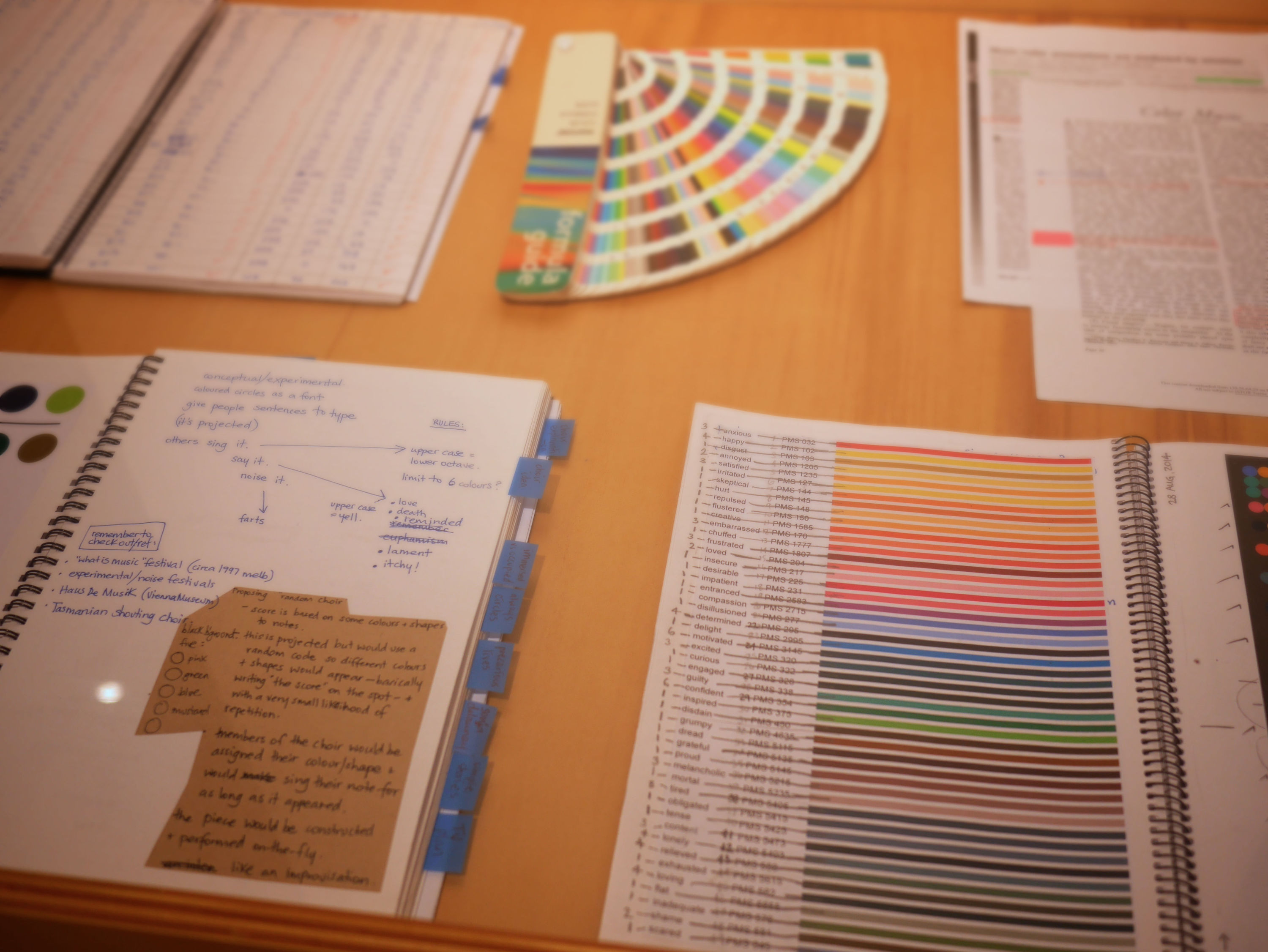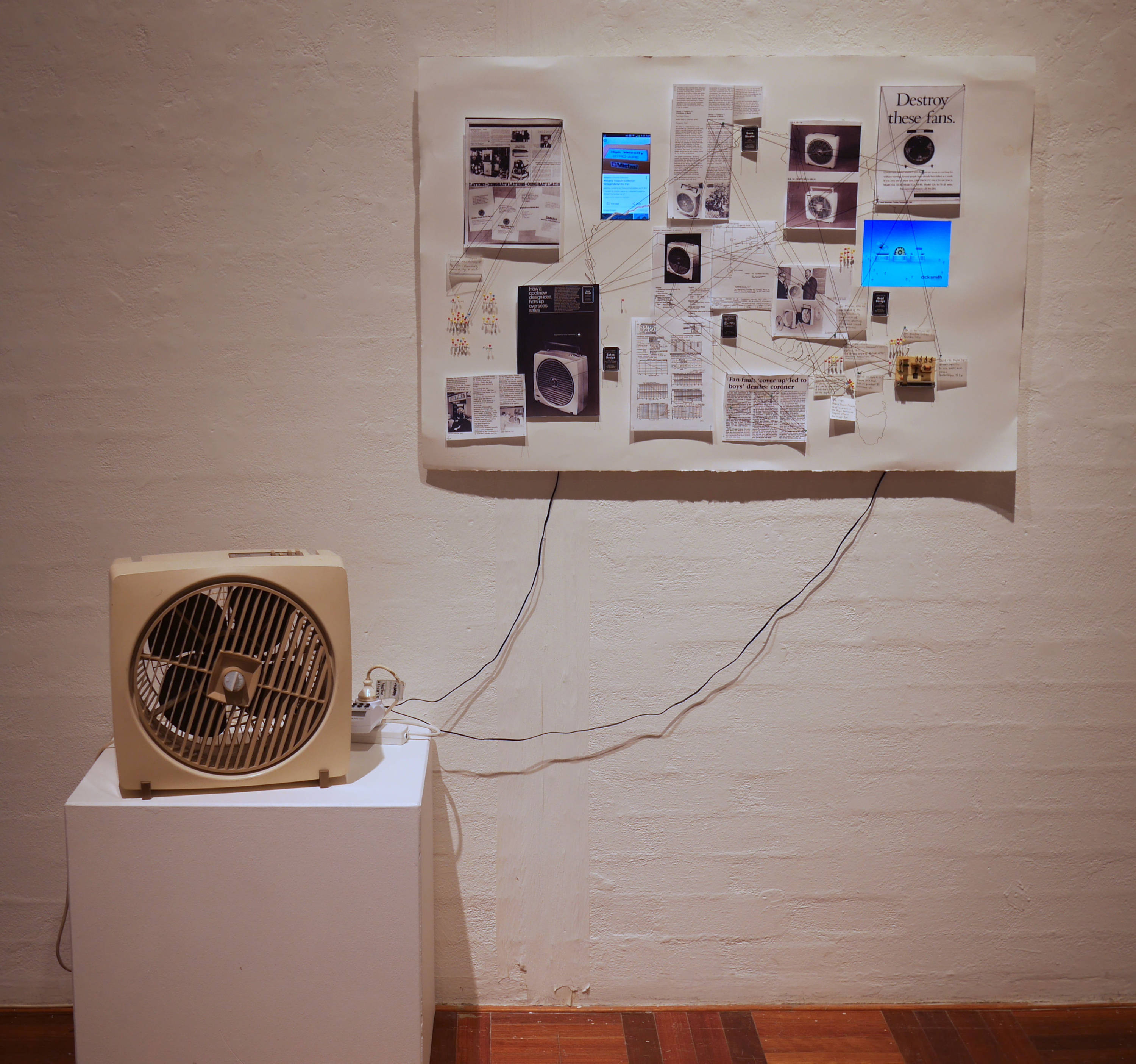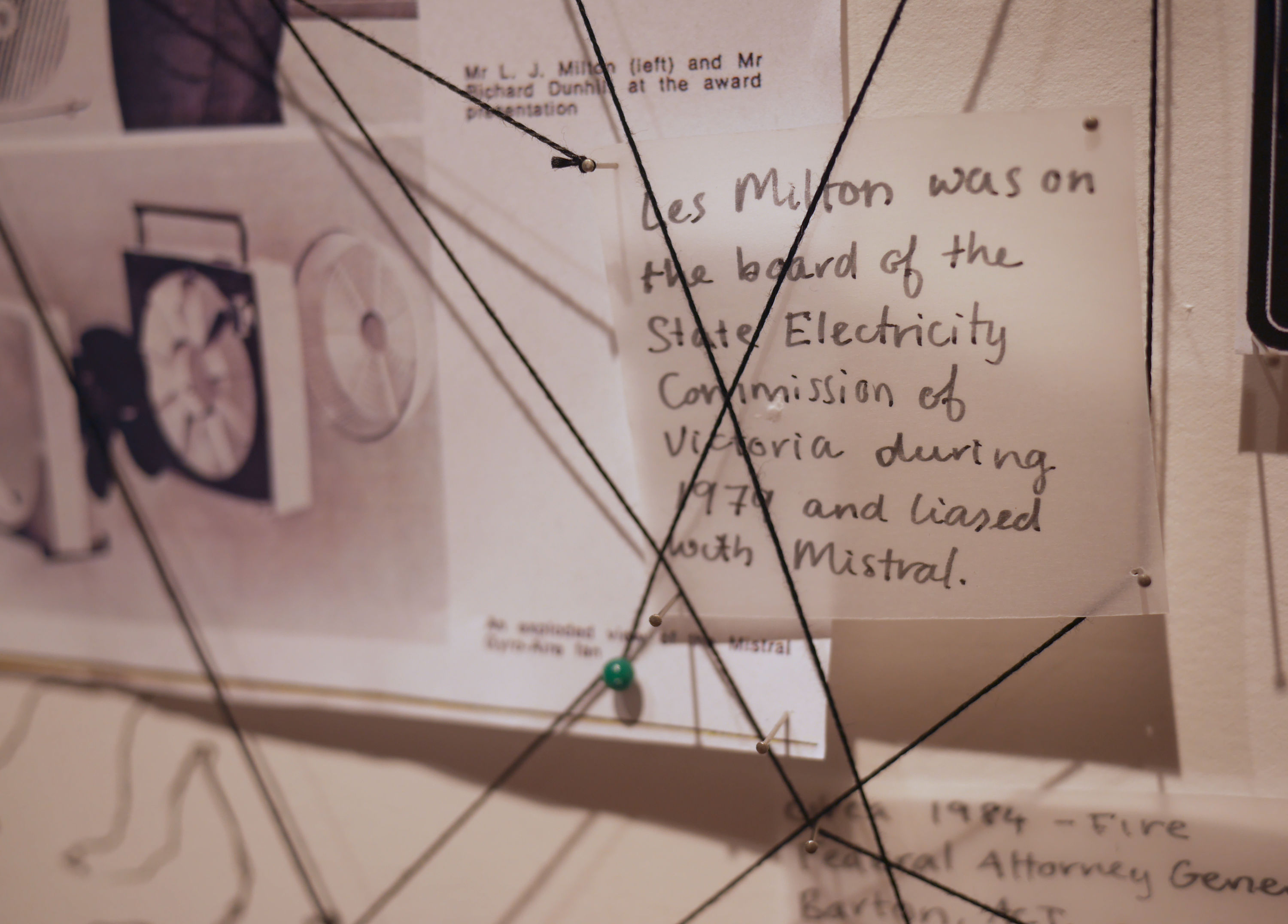Pockets Are An Evolutionary Advantage
Found wooden furniture, milkpaint, acrylic paint, 2015
Ecru Cabriole Tree with Chair #39
Four salvaged ecru dining chairs with Cabriole legs, 2013
Ashley J. Eriksmoen
For over two decades, my practice has been centered on the gaps, tensions, and overlaps between manmade and natural environments, the domains of that which was built versus that which has grown. My conceptual concerns arise from existential questions regarding humans’ capacity and need to feel connected to their environments, be it their living room or their planet; my work looks at the connection between people and the world mediated through relationships to objects, and how objects can bridge the divide. Many of my works utilize devices such as slight asymmetry and visual tension to imply animate posture and gesture in furniture forms. My work also addresses issues of sustainability, natural resources, consumerism, and waste, and most recently the inherent violence that arises from delineation and desensitization regarding the world and others.
My current research re-presents designed objects, namely wooden furniture, that has lost its perceived value for contemporary owners. The loss of value is a complex situation, but may involve loss of function (broken), loss of need/situation (outgrown, downmarket vs. prestigious, downsized, death), loss of aesthetic appeal (out of fashion or surficially damaged), etc. The planet’s environment and natural resources are being depleted not only for consumers’ needs, but for their comfort and desire.
I design objects from abject, forgotten objects to give the timber a third life (tree to furniture to critical object) that conveys the loss and the continued relevance of the material. Making with found materials and objects requires a different approach to design process than “blue sky” thinking does. It requires what I will call a reactive approach to design. The world is, in fact, not our oyster to crack open and swallow whole. We are its stewards, and our total design freedom must be balanced against a greater good.
